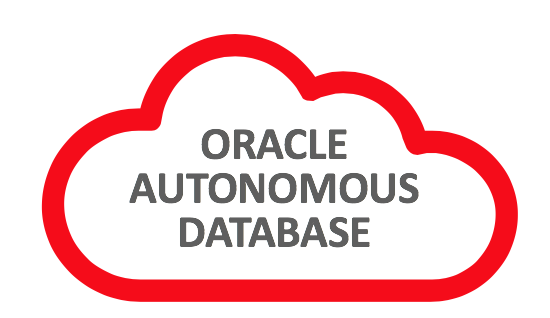We saw Larry Ellison visit Redmond for the first time to make an important partnership announcement with Satya Nadella. Yesterday’s announcement shows we have two similar-sounding Oracle database services on Azure. Oracle Database Service “FOR” Azure (ODSA) and Oracle Database “AT” Azure (OracleDatabase@Azure).
Here is a quick note to understand the differences between these services – this blog is based on the limited information available for Oracle Database@Azure – my understanding may be incorrect. The good news is that I am headed to Oracle Cloud World, and we have everyone from Oracle there to answer any questions.
| Oracle Database Service for Azure (ODSA) | Oracle Database@Azure |
|---|---|
| ODSA is an Oracle-managed service that automatically configures the network between your Azure and Oracle accounts. It provides an Azure-like portal to create and manage your Oracle databases running in OCI as if they were Azure resources. | The hardware is collocated in Azure’s data center (similar to Exadata Cloud@Customer). |
| Dependency: – Available only in regions with OCI-Azure Interconnect. – Interconnect regions located around the world | Dependency: – No dependency on OCI-Azure Interconnect. – According to FAQ, Oracle Database@Azure previews will be available in early 2024 in regions in the United States, the United Kingdom, and Germany, with plans to expand globally. |
| Benefits: – Split stack architecture – run applications and databases in different clouds. – Oracle License advantages of using OCI for Oracle products. – Easy configuration and setup. | Benefits: – Azure customers can provision databases on Exadata in Azure without latency concerns. – Oracle License advantages of using Oracle Engineered system for Oracle products. – No infrastructure configuration is required. |
| Tenancies required: – Azure tenancy and Subscription. – OCI Tenancy. | Tenancies Required: – Azure tenancy and Subscription Note: The control plane may be in OCI, and thus, a tenancy subscription might be needed, but I’m not sure. |
| Provisioning: – Services are provisioned from an Azure-like portal managed by OCI. | Provisioning: – Provision service directly from the Azure portal. |
| Available Database Services: – Oracle Base Database (DBCS) – Oracle Autonomous on Shared Exadata Infrastructure (ADB-S) – Oracle Exadata Database (ExaCS) on dedicated infrastructure – MySQL Heatwave | Available Database Services: – Oracle Exadata Database (ExaCS) on dedicated infrastructure (including autonomous database ADB-D cluster) Note: Just like ExaC@C. |
| Physical location: – Oracle databases are provisioned in the OCI tenancy (OCI Data Center). | Physical location: – Exadata hardware is provisioned in an OCI-dedicated area in the Azure Data Center. |
| Latency: – In single digits between OCI and Azure | Latency: – No latency concerns as all services are in Azure DC and under one network. |
| Provisioning Steps: – Link Azure tenancy and OCI tenancy (Account Linking) – Azure subscription linking – Provision desired DB services from the multicloud portal. | Provisioning Steps: – Purchase from Azure Marketplace. – Create Oracle Exadata Infrastructure from Azure Portal. |
| Management: – Through an OCI-managed multi-cloud portal http://multicloud.oracle.com/azure | Management: – Managed using Azure Portal along with other Azure services. |
| Support: – Support portal in Oracle DB for Azure home page (Multi-cloud Portal). – FAQ: You request help directly from within the Oracle Database Service for Azure portal; this allows you to create an OCI Service Request and get the help you need from OCI. | Support: – Support through the Azure portal – FAQ: Oracle and Microsoft have developed a joint support model to ensure rapid response and resolution for mission-critical workloads. Customers can reach out to either Microsoft or Oracle support teams. |
| Billing: – FAQ: Microsoft bills customers for the Azure resources they use. They are billed by Oracle for the Oracle Database services they deploy on OCI. – OCI Universal Credits managed through OCI tenancy subscription. – There are no charges for the Interconnect ports or ingress/egress network traffic over the Interconnect. – Eligible for support rewards (25% of OCI spend towards active Oracle technical support contract renewal – 33% for ULA) | Billing for Microsoft Customers: – Purchase Oracle Database@Azure towards your Microsoft Azure Consumption Commitment (MACC). – Receive one bill for consuming Oracle Database@Azure and other Azure services. – Eligible for support rewards. Billing for Oracle Customers: – (No mention of how to use OCI Universal Credits.) – Use unlimited license agreements (ULAs) or bring your own license (BYOL), just like you can with Oracle Cloud Infrastructure. – Eligible for support rewards |
| Read more: https://www.oracle.com/cloud/azure/oracle-database-for-azure/ | Read more: https://www.oracle.com/cloud/azure/oracle-database-at-azure/ |
| Oracle Database Service for Azure (ODSA) | Oracle Database@Azure |
These visualizations from the above reference URLs explain these services to us.
Oracle Database Service for Azure
How Oracle Database Service for Azure works

Multicloud deployment with applications on Azure and databases on OCI

Oracle Database@Azure
How Oracle Database@Azure works

Modernize and innovate on-premises workloads with Oracle Database@Azure

The Oracle and Microsoft partnership is moving in the right direction to help customers running Oracle databases. Though the OCI IaaS services are cheaper than Azure, there may be reasons for you to run the services in Azure (or use Azure front-end services that are not yet available in OCI). The Oracle Database@Azure helps such customers to manage only one Cloud (Azure) and reap the Oracle license and Exadata performance benefits available only in OCI.

Footnote: You can install and run Oracle databases on Azure VM. The drawbacks are it will not give you Exadata-like performance, and licensing rules are different. https://learn.microsoft.com/en-us/azure/virtual-machines/workloads/oracle/oracle-reference-architecture



